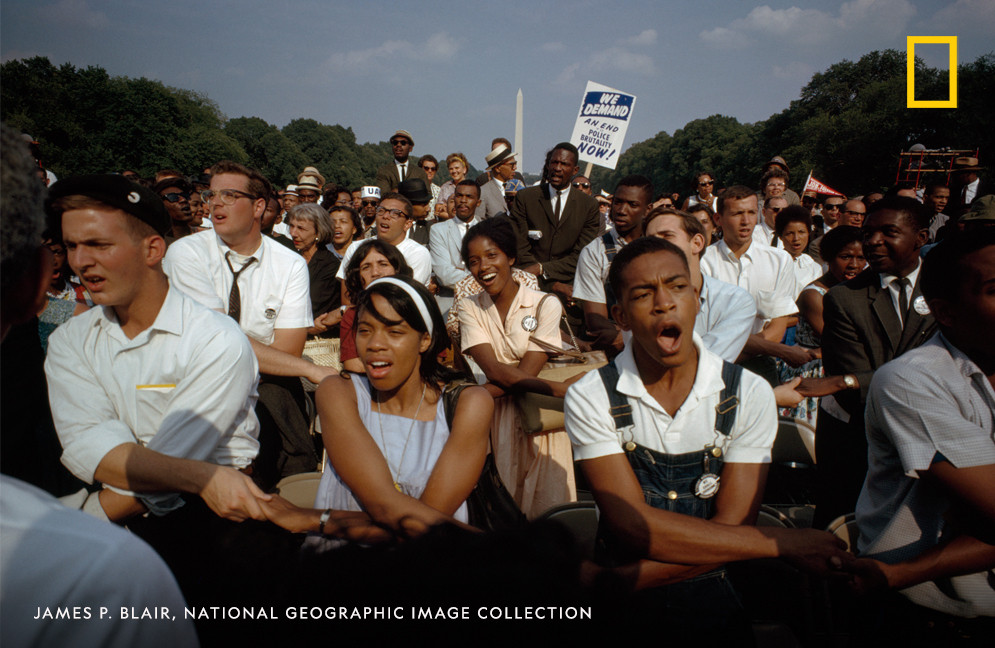
Have you ever wondered how exactly paleoart is made? Today we'll be hearing from two paleoartists—Davide Bonadonna (@d_bonadonna) and Gabriel Ugueto (@serpenillus)—who created the incredible art featured in our Oct cover story on #NatGeoReimaginingDinos: on.natgeo.com/34vWJje
QUESTION 1: How would you describe what paleoart is to someone who is unfamiliar with it?
@d_bonadonna: The word perfectly describes what we're talking about: artistic skills applied to a paleontological context. An illustrator trying to represent as realistically as possible the creatures and environments keeping paleo discoveries & science as the only landmark. 1/2
While paleontology has a tight range of expression totally based on scientific proofs, the artistic side admits a wide range of approaches. It's what makes prehistoric settings worth drawing. A balanced mix of science and artistic inspiration can produce real pieces of art. 2/2
@serpenillus: Paleoart is the branch of scientific illustration in charge of depicting the life appearance of extinct forms of life according to scientific evidence. Paleoart is key for general audiences to envision what long gone animals and plants could have looked like. 

@d_bonadonna: It all starts with my meeting with the Italian paleontologist Simone Maganuco. About 15 years ago I was looking for someone who could supervise some dino-drawings of mine and I met him in the Museum of Milan. He was looking for someone to help him to set up... 1/2
...a traveling exhibition mainly about dinosaurs. We immediately appreciated each other's skills, ambitions and projects. After winning a couple of paleoart prices I understood this was my way. 2/2
@serpenillus: I have always been fascinated with prehistoric animals since I was a kid. I remember reading books about dinosaurs and other extinct creatures when I was very young. So when I became a scientific illustrator, working primarily on depictions of wildlife... 1/2 

...it was a natural progression to start working on extinct animals. 2/2
Paleoart Fun Fact: Paleoart, or paleoillustration, is vital for constructing the most accurate possible depictions of dinosaurs and other prehistoric creatures as they looked when they were alive nationalgeographic.com/science/2018/1…
QUESTION 3: How long does it usually take you to create one piece of paleoart?
@d_bonadonna: It depends what the project's about. For an “ordinary” full colored one, with environment and a main single subject, I’d say about 10 days. Sometimes my clients have very clear ideas and provide me all the references I need. This helps so much of course, so I... 1/3
can concentrate just on the creative part, which means shorter times. And of course there is much difference between making a tropical forest from a sand desert! 2/3
Layout size matters too: when you work on a mural you have to pay much more attention to details than in a half page print. Some clients are in a hurry because they contact you too late. Some others are much wiser and give you all the time you need. 3/3
@serpenillus: The time I spend working on an illustration varies considerably depending on the complexity of the piece, and also how familiar I am with the animal I am reconstructing. 1/2 

Researching about that particular species, as well as about the time and place it lived in, amounts to a large portion of the time necessary to complete an illustration. 2/2
QUESTION 4: What was the process for creating paleoart for @NatGeoMag's recent story on dinosaurs? 

@d_bonadonna: I began sketching 2-3 different ideas for each illustration. The authors supervised anatomy, plants, environment. My @NatGeoMag counterpart asked for some elements to be modified/moved to make them all fit in the layout properly. I took a lot of time working... 1/2
on Edmontosaurus, the most challenging because it's the best known. For the animations, I asked my friend Fabio Manucci to work together & he did a wonderful job. I did digital sculpting & 2D colored profiles while he animated. Despite the crazy fights, we're still friends 😁 2/2 

@serpenillus: After the Graphics Editor informed me what dinosaurs were needed, I started looking at photos & drawings of the fossil skeletons of each species. Luckily, they're all relatively well-known dinosaurs that I'm very familiar with. I sketched each dinosaur in... 1/4 

...various poses that would best fit the design of the page they would be showcased in. Once the best pose for each animal was selected, I started thinking about musculature, adipose tissue & skin covering based on the latest current evidence and scientific speculation. 2/4
Several of the dinosaurs I reconstructed are unique in that we have evidence of the coloration they possibly had, which is extremely cool! 3/4
For the others, I created color patterns that would suit creatures with similar habits to those hypothesized they had, as well as being appropriate for animals that dwell in habitats like those in which they lived. 4/4
Paleoart Fun Fact: Today many of the first "paleoart" masterpieces gather dust in museum storage rooms, their creators forgotten. But these paintings once attracted large audiences, aroused controversy, and deeply influenced later visions of prehistory nationalgeographic.com/news/2017/09/d…
QUESTION 5: What is something you wish everyone knew about paleoart?
@d_bonadonna: I think that the term “Paleoart” means something serious, more serious than what most people usually think. “Drawing dinosaurs” seems to be something just for kids, while we know that requires a lot of efforts to do it well. For me it is a real job... 1/2
...it’s an artistic branch devoted to science, so it is a fundamental way to turn what’s in a paleontologist mind into an image, something that everybody can easily understand but asks for a professional approach to present it. 2/2
@serpenillus: Something I would like people to know about paleoart is how much time and effort is put into reconstructing an extinct animal.
@d_bonadonna: I’d suggest to start drawing your favorite subjects following what the most quoted artists produce. Try to reproduce the same technique, lights and color palette, understand how to make a balanced composition and study as much anatomy as possible. 1/3
Your own style develops by its own in time. Stay updated with new studies & papers, make a full archive of images about the best art you see around, not just about paleontology of course. It’s a matter of training, draw as much as possible, starting with traditional tools... 2/3
...(pencils, graphite, brushes…) and then go to digital, a skill that can’t miss in today's professional world. Show your drawings on social networks, listen to the criticisms as something helpful to improve. 3/3
@serpenillus: From an artistic perspective, the best advice I could give would be to practice and sketch a lot. Practicing on a regular basis is the best way to hone your skills as an artist. 1/2
Also, if you are planning to reconstruct extinct animals, I cannot emphasize enough the importance of observing extant animals, their movements and their behaviors, as well as becoming familiarized with their anatomy. 2/2
Thank you @d_bonadonna and @serpenillus for sharing your stories and knowledge about paleoart with us! Follow #NatGeoReimaginingDinos 🦕🦖 to see what else we've been learning about dinosaurs: on.natgeo.com/2GuvgX7
• • •
Missing some Tweet in this thread? You can try to
force a refresh








